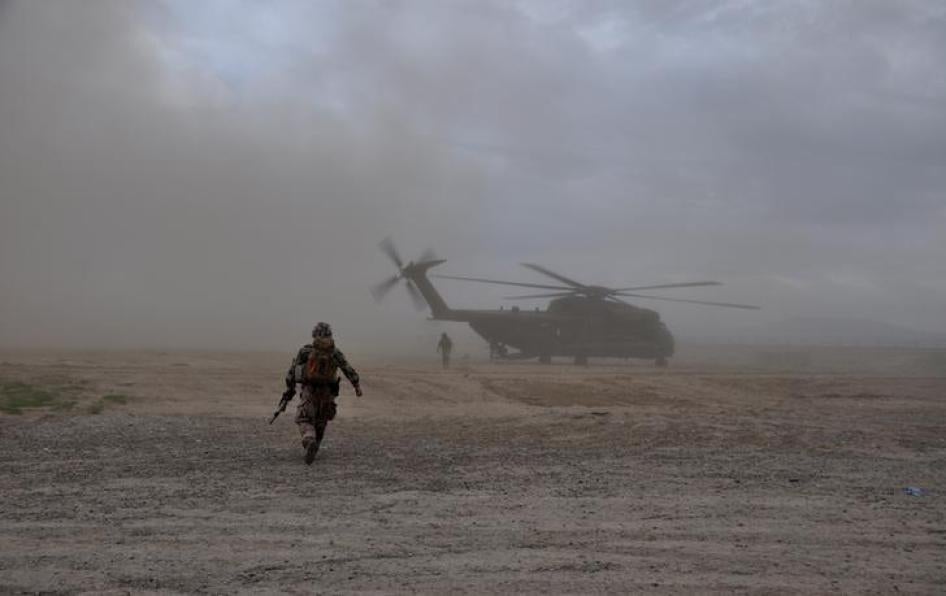Once again, airstrikes targeting insurgent leaders in Afghanistan have killed and injured dozens of civilians. On the morning of April 2, Afghan government forces attacked the Gujar Akhondzada Madrassa, a religious school, in the Dasht-e-Archi district of Kunduz province, as a graduation ceremony for the students was reportedly in progress. Both an Afghan Defense Ministry spokesman and Kunduz provincial government officials have claimed that the attack on the madrassa killed high-ranking Taliban officials, including members of the Quetta Shura, the Taliban’s leadership council.
According to local residents, the attack killed at least 50 people and perhaps many more. Residents have told journalists that about 300 people were at the madrassa or nearby grounds at the time of the airstrike. Local journalists told Human Rights Watch that rescuers have brought many of the injured, including children, to Kunduz’s regional hospital.
Dasht-e Archi has been a Taliban stronghold since at least 2015, and most of the district is under effective Taliban control. Taliban-controlled districts in Kunduz province have seen intense fighting in recent months as Afghan government forces, assisted by US airstrikes, have tried to retake them.
This uptick in fighting comes amidst growing concern about rising numbers of civilian casualties caused by U.S.-supported Afghan government airstrikes. 2017 saw the United Nations Assistance Mission to Afghanistan (UNAMA) record the highest number of civilian casualties from airstrikes since it began documenting these incidents in 2009.
Meanwhile, official measures by the Afghan government to track and investigate civilian casualties are significantly lacking, and U.S.-provided training for the specialized Afghan ground troops who call-in airstrikes and play a vital role in ensuring their accuracy, known as Afghan Tactical Air Coordinators (ATACs), lags far behind what is needed as aerial operations increase.
The Kunduz strike apparently targeted Taliban officials and commanders; the Afghan government claims as many as 15 Taliban were killed. Under the laws of war, high-ranking (non-civilian) Taliban officials would be subject to attack. However, bombing the madrassa, where hundreds of civilians had gathered, would be a classic example of a disproportionate attack.
The laws of war permit attacks only against military objectives, which includes enemy fighters and commanders. Civilians are immune from attack, except those directly participating in hostilities. For a specific attack on a military objective to be lawful, it must discriminate between combatants and civilians, and the expected loss of civilian life and property must be proportionate to the anticipated military gain from the attack. Attacks that target civilians, that are indiscriminate, or that cause disproportionate civilian loss are unlawful. While military commanders are normally lawful targets (and they put civilians at risk by commingling with them), an attack targeting a crowded school raises clear concerns about disproportionate loss of civilian life.
The US military plays a crucial role in all aspects of Afghan air operations. It provides all training to the Afghan air force, and has recently provided it with new attack aircraft and helicopters. Parties to a conflict have an obligation to investigate allegedly unlawful attacks in which they take part. Both the Afghan government and the US government have stated that they take civilian casualties seriously, yet they have rarely provided information on investigations into incidents in which civilians were killed or harmed.











